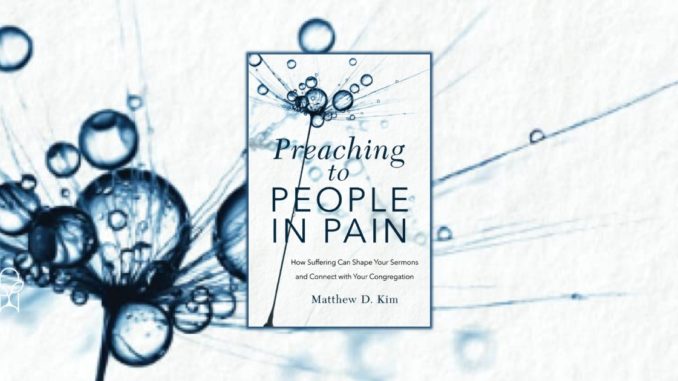
Published by Baker Academic on May 18, 2021
Genres: Academic, Non-Fiction
Goodreads

Offering an important corrective to a pain-averse culture that celebrates individualism and success, veteran preacher and teacher Matthew Kim encourages pastors to preach on the painful issues their congregations face. Through vulnerability and self-disclosure, pastors can help their congregants share their suffering in community for the purpose of healing and transformation. The book includes stories, shares relevant Scripture texts imparting biblical wisdom, and offers best practices for preaching on specific topics. Each chapter ends with discussion questions and a sample sermon.
As a pastor, I don’t think it is possible for one to preach with authenticity without recognizing the pain the members of one’s members might be going through—or indeed, without recognizing and acknowledging one’s own pain. Preaching to People in Pain isn’t a primer on how to do a new thing, it’s a primer on how to better do a thing you are inevitably already doing. Your people are in pain. Will the church be able to address it?
After a few introductory chapters, Matthew Kim provides readers with six essays about preaching on different types of pain: painful decisions, painful, finances, painful health issues, painful losses, painful relationships, and painful sins. Notice how Kim defines “pain” here. It’s not just physical, but also mental, relational, and spiritual. It’s an acknowledgment that pain exists in a variety of ways and the church is called to respond to it all. Each chapter concludes with a sample sermon on each topic, allowing the reader to see in specificity what Kim has drawn up generally.
Each chapter has Kim develop the topic around nine different guiding questions:
- What passage will I preach on?
- What type of pain/suffering is revealed in the text?
- How does the Bible character or biblical author deal with the pain?
- How does this pain in the text relate to our listeners’ pain?
- What does this pain say about God and his allowance of pain?
- How does God/Jesus/the Holy Spirit help us in our suffering?
- How can our preaching show care and empathy?
- How can we share this pain in Christian community?
- How will God use our suffering to transform us and bring him glory?
I don’t care to get too deep into it, as this is a review and not a theological debate, but that last question leaves me a bit unsettled, as it seems to be indicating that God must redeem all suffering or that all suffering must have redemptive purpose. That belief rather downplays the severity of any evil or suffering because it rests on the assumption that God needed it to obtain glory. I don’t think that’s the case at all. I don’t think it’s helpful, for example, to tell a rape victim that God will use their suffering to transform them and bring God glory. God does indeed “make beauty from ashes” but I don’t believe he’s the one creating the ashes.
While the bulk of the book is devoted the topic of the title—Preaching to People in Pain—I appreciated that Matthew Kim included a section on preaching out of pain. In fact, he makes this the introductory chapter of the book, setting the tone of pastoral leadership as someone who is a part of the community they lead, sharing their lives with their congregation as fellow followers of Jesus. Too often, pastors are expected (by others or themselves) to be relationally and emotionally separate from their leadership role. They are expected to be “professional.” I recall one pastor describing having a miscarriage immediately prior to a service and went ahead and performed the service, believing it to be their duty. While Kim advocates for balance—the pulpit is not a place to air grievances—it is a place to connect with one’s congregation and share one’s life.
Overall, while it’s a good foundational work and a helpful guide toward preaching on pain, the content feels a little generic and superficial. The structure lends itself to repetition and Kim’s writing does nothing to break that cycle, with the result that the advice, though good, comes across as rather bland and a bit too generic to be of much specific good. It’s perhaps a good volume for developing preaching theory, maybe as an undergraduate homiletics text, but it lacks the depth to truly be the type of work that most pastors need to do effective pastoral work.
